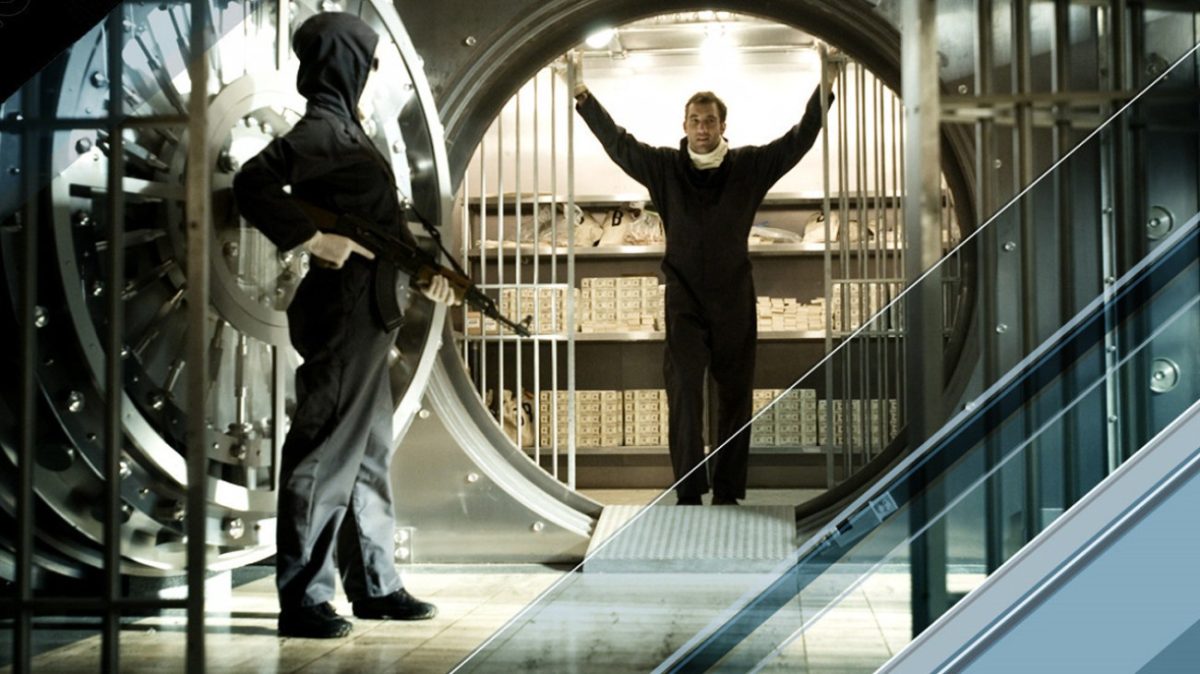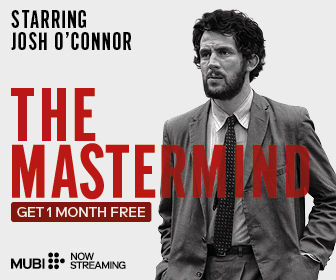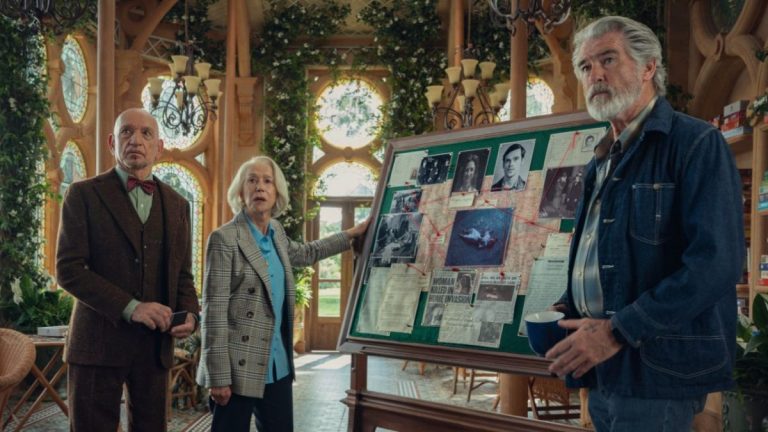Spike Lee’s Inside Man (2006) opens with a startling confession: Dalton Russell calmly declares that he has devised and carried out the perfect bank heist. Yet the film’s brilliance lies not in the mechanics of the robbery itself, but in the way it unravels the carefully spun fabric of power, corruption, and buried history. What begins as a seemingly straightforward cops-and-robbers standoff quickly morphs into a moral battleground, where the criminals, the police, and shadowy third parties are all bound by secrets far weightier than stolen cash. At its heart, Inside Man is not a question of who outsmarts whom, but of what truths must be exposed—and what price must be paid—when greed, guilt, and justice collide.
Spoilers Ahead
Inside Man (2006) Plot Summary & Movie Synopsis:
Masked men in painter uniforms seize a Manhattan bank and hold dozens hostage. Their leader, Dalton Russell, runs the operation with precision, disguising hostages as robbers and ensuring confusion reigns both inside and outside. Detective Keith Frazier negotiates with Russell, while Arthur Case, the bank’s founder, quietly hires power broker Madeleine White to protect a mysterious safe deposit box. The robbery seems odd from the start: the ‘execution’ of a hostage turns out to be staged, the guns are fakes, and when the robbers leave, nothing appears stolen. But as Frazier digs deeper, he realizes the heist was never about money. It was about history and justice.
Why Does Dalton Russell Rob the Bank?
Dalton tells us from the beginning: he has committed the perfect crime. But his motive is not simple greed. The true prize is safe deposit box No. 392, a box that has been unlisted in any bank records since 1948. When Russell cracks it open, he finds documents proving that Arthur Case built his fortune by collaborating with the Nazis, betraying Jewish friends during the Holocaust in exchange for wealth and diamonds. By targeting this box, Russell doesn’t just rob a bank; he robs Case of the illusion of respectability. Russell’s robbery is both meticulous and symbolic. He hides within the bank for a week, stepping out only after the dust has settled, with both diamonds and the damning evidence Case wanted buried forever.
What Role Does Detective Frazier Play?
Detective Keith Frazier is the moral center of the film. From the start, he is under pressure: his reputation is tainted by corruption charges, and this case could either redeem him or sink him further. His negotiation style reveals his instincts. When he attacks Russell during a walkthrough, it’s not recklessness; it’s a test.
He senses that Russell is not a killer, which later proves true when the supposed hostage execution is revealed as a ruse. After the ‘robbers’ blend into the hostages and disappear, Frazier is expected to let it go. But he refuses. He follows the thread to the unregistered deposit box, confronting Case and uncovering his Nazi past. In the end, Russell even rewards him, slipping a diamond into his pocket, as if acknowledging that Frazier is one of the few men on the right side of justice.
Who is Madeleine White and Why Does She Intervene?
Madeleine White, the political fixer, enters the story not to protect the hostages but to shield Arthur Case. She wields influence with the Mayor and negotiates her way into the bank to speak with Russell. Their conversation is telling. Russell makes it clear he knows what Case has been hiding. White leaves unsettled, aware that her power has limits. Her later confrontation with Case reveals her disgust; she may protect elites for a living, but she cannot erase the weight of history or his betrayal. White’s role underscores one of the film’s themes: in a city built on money and influence, even the most powerful figures can be brought down by the truth.
Why Does Arthur Case Fear the Robbery?

Arthur Case embodies the respectable facade of wealth and philanthropy. However, his fortune is marred by bloodshed. His Nazi collaboration, betraying a Jewish friend for diamonds and profit, is the secret hidden in box 392. The robbery terrifies him because it is not about cash but about exposure. Losing the documents would mean losing his carefully built reputation and possibly facing prosecution. When confronted by White and later by Frazier, Case shows no remorse. He admits his betrayal but frames it as a decision driven by survival and ambition. Russell’s heist ensures that his past cannot stay buried.
How Do the Robbers Escape?
The genius of Russell’s plan lies in its misdirection: by outfitting both hostages and robbers in identical coveralls and masks, he blurs every line between victim and assailant, creating an atmosphere of deliberate ambiguity. When the police break in, they won’t even know the differences between the two.
He discloses that the weapons are just toys, that the executions are staged, without any crime. It can even be theorized that there has been nothing potentially prosecutable, and there is no loot that appears to be missing. Result: nothing is provided to the police, and it’s as if they are searching for the wind. At this point, Russell is hiding within the false wall of the bank. A few weeks later, he emerges as if nothing had happened. It is not just a robbery; it is a theatrical production, designed to leave the police chasing shadows while Russell subtly slips away as if nothing had happened.
Inside Man (2006) Movie Ending Explained:
Did Dalton Really Commit the Perfect Robbery?
The ending of “Inside Man” reveals that Dalton Russell’s ‘perfect robbery’ was never about the money. It was about exposing a hidden crime that had been buried for decades. From the start, Russell’s meticulous plan ensured that no bloodshed, no traceable loot, and no clear suspects would remain, making it impossible for the police to prove that a robbery had even taken place.
After the chaotic climax, when the masked robbers vanish among the hostages, it seems as though they have escaped cleanly. The police find toy guns, staged props for a fake execution, and no missing cash. But Russell is not among those fleeing. Instead, he hides inside a false wall built within the bank, staying concealed for an entire week until the investigation cools down. When he finally emerges, he carries with him the real target: the contents of safe deposit box No. 392.
The box belongs to Arthur Case, the bank’s founder. Inside, Russell finds diamonds and, more importantly, incriminating documents proving Case profited by collaborating with the Nazis during World War II. He betrayed a Jewish friend in exchange for wealth and kept the evidence hidden for decades. For Case, the robbery represents more than financial loss. It threatens to destroy his reputation and legacy. Detective Keith Frazier’s persistence ensures the truth is uncovered. When he inspects the box, he discovers a Cartier diamond ring taken from Case’s betrayed friend, along with a note from Russell reading, ‘Follow the ring.’ This pushes Frazier to confront Case and consider involving the Office of War Crimes Issues.
In the final scene, Frazier finds a loose diamond slipped into his pocket during a brief collision with Russell as he left the bank. The gesture works as both a reward for Frazier’s integrity and a reminder of the injustice Russell sought to expose. So, did Dalton Russell commit the perfect robbery? In practical terms, yes. He outsmarted police surveillance, avoided violence, and left without suspicion.
But more importantly, his heist was ‘perfect’ because it struck at moral corruption rather than money. By targeting Case’s secret, Russell exposed a crime far greater than bank theft: the betrayal of human lives for profit. Russell’s brilliance lies in showing that sometimes justice comes not from law or power, but from the careful precision of a thief.




![Hellraiser [2022] Movie Ending, Explained – These Hellish Sights Come At A Dear Price](https://79468c92.delivery.rocketcdn.me/wp-content/uploads/2022/10/Hellraiser-2022-768x408.jpg)


